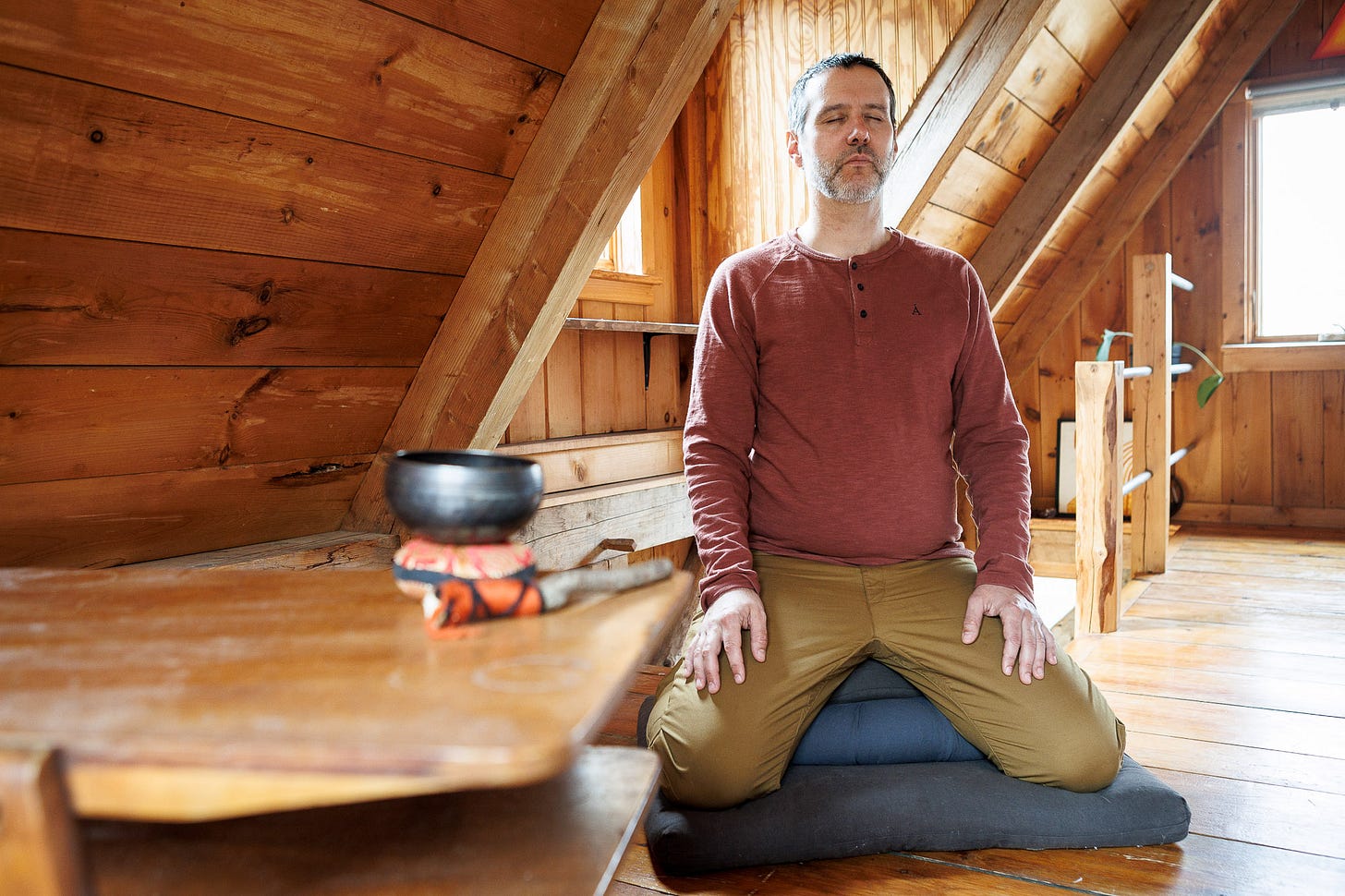How Mindfulness & Self-Compassion Revolutionized My Inner Life
What happened when I stopped fighting my bodymind and started befriending it with curiosity.
For a long time, practicing meditation was painful. Not because my knees or back hurt. But because my inner experience could be excruciating.
I believed I had to get my thoughts to stop, or I wasn’t doing it right. As someone with anxiety and a hectic mind, I always felt I was failing. I’d get carried away by whatever was going on in my mind. I’d sit with repetitive thoughts and scary emotions that wouldn’t go away.
That alone made it hard enough to maintain a practice. But seeing these inner experiences as failures injected a subtle shame.
Sitting down and confronting what was going on in my mind was hard. Adding in that shame made it torturous.
Then, two hyphenated words changed everything.
Self-compassion.
They helped me create a steady and transformative meditation practice. They revolutionized my inner life.
The Two Wings of Transformation
That shift started when I discovered Insight Meditation practice.
Also known as Vipassana, Insight practice is built on two foundational elements:
Noticing what’s happening in the body and mind right now, with an intention not to judge the experience.
Meeting tough moments—like recurring thoughts, strong feelings, and uncomfortable bodily sensations—with curiosity and kindness.
The first part, clear seeing, was transformative in and of itself. It taught me it’s OK to think and have big feelings when meditating. It’s better than OK. These experiences aren’t distractions. They’re teachers. Whatever comes up can reveal truths about our life and inner world.
But, as noted above, what we see when we slow down and pay attention can be hard.
“The practice of meditation, or coming into presence, is described as having two wings. The wing of mindfulness allows us to see what is actually happening in the present moment without judgement. The other wing is heartfulness or love — holding what we see with tenderness and compassion.” — Tara Brach
That’s where compassion comes in. When we open to the truth of our experience, self-compassion helps us meet whatever arises with warmth and curiosity, instead of resistance or judgement.
Self-compassion reminds us that:
Pain is part of being human.
Our mind’s interpretation of our inner life is just one story.
We can hold our experience and ourselves with care.
Without compassion, mindfulness can feel detached or clinical. Compassion without mindfulness can be overwhelming or difficult due to reactive responses. Together, they create a powerful team.
As my teacher, Tara Brach, shares in the quote above, mindfulness and compassion are like two wings of a great bird. Combined, they can inspire healing, insight, and transformation—allowing us to fly free.
Exploring My Inner World
As I started practicing the art of allowing—letting whatever I was experiencing be there without judging it, pushing it away, or clinging to it—things got real. Quick.
I noticed the familiar narratives attached to repetitive thoughts. Doubting. Planning. Remembering. Imagining. Worrying.
Then came the emotions. Anger. Sadness. Fear. Shame.
Eventually, I began coming into my body. I started noticing the difficult sensations I’d long ago cut myself off from when I made the unconscious decision that this body stuff was just too much. The implicit belief that I needed to live in my head—or “mental control tower,” as Tara Brach calls it—to keep myself safe.
As I brought awareness to all this, I developed a detailed map of my inner landscape. The stories I told myself. The unhelpful thoughts that would swirl around. How to know what I was feeling from one moment to the next. And the massive amounts of information available from my body that I had disconnected from for so long.
When the tape of repetitive thoughts won’t stop playing. When painful emotions keep punching me in the gut. Or when the ache of that inner tension won’t go away. I can meet my experience with kindness. With empathy. With understanding.
A New, Compassionate Inner Relationship
But, without self-compassion, none of that would have been possible.
When the repetitive thought tape won’t stop playing. When painful emotions keep punching me in the gut. Or when the ache of that inner tension won’t go away. I can meet my experience with kindness. With empathy. With understanding.
It might sound like saying inwardly: “This is so hard right now. Hang in there. You can do this.”
It could mean putting a hand on the place that’s hurting or the chest that’s pounding. Or giving myself a big hug.
Or acknowledging that these thoughts, emotions, or sensations are here for a reason. Usually, they’re trying to keep me safe. They’re protectors. So I can thank them for being here. But gently remind them that, in this moment, I don’t need them. They can relax.
After practicing this nearly every day for four years, it feels safe to say that I’ve developed a new, much healthier relationship with my inner life.
Repetitive thoughts are fewer. When they appear, I know how to meet them.
Difficult emotions still arise. But I have tools to work with them.
And uncomfortable bodily sensations, boy, are they still showing up. But now I can meet them with tenderness—and in doing so, they often ease.
The dynamic duo of mindfulness and self-compassion has transformed my life. They hold that same potential for anyone willing to put in the work. Could that be you?



